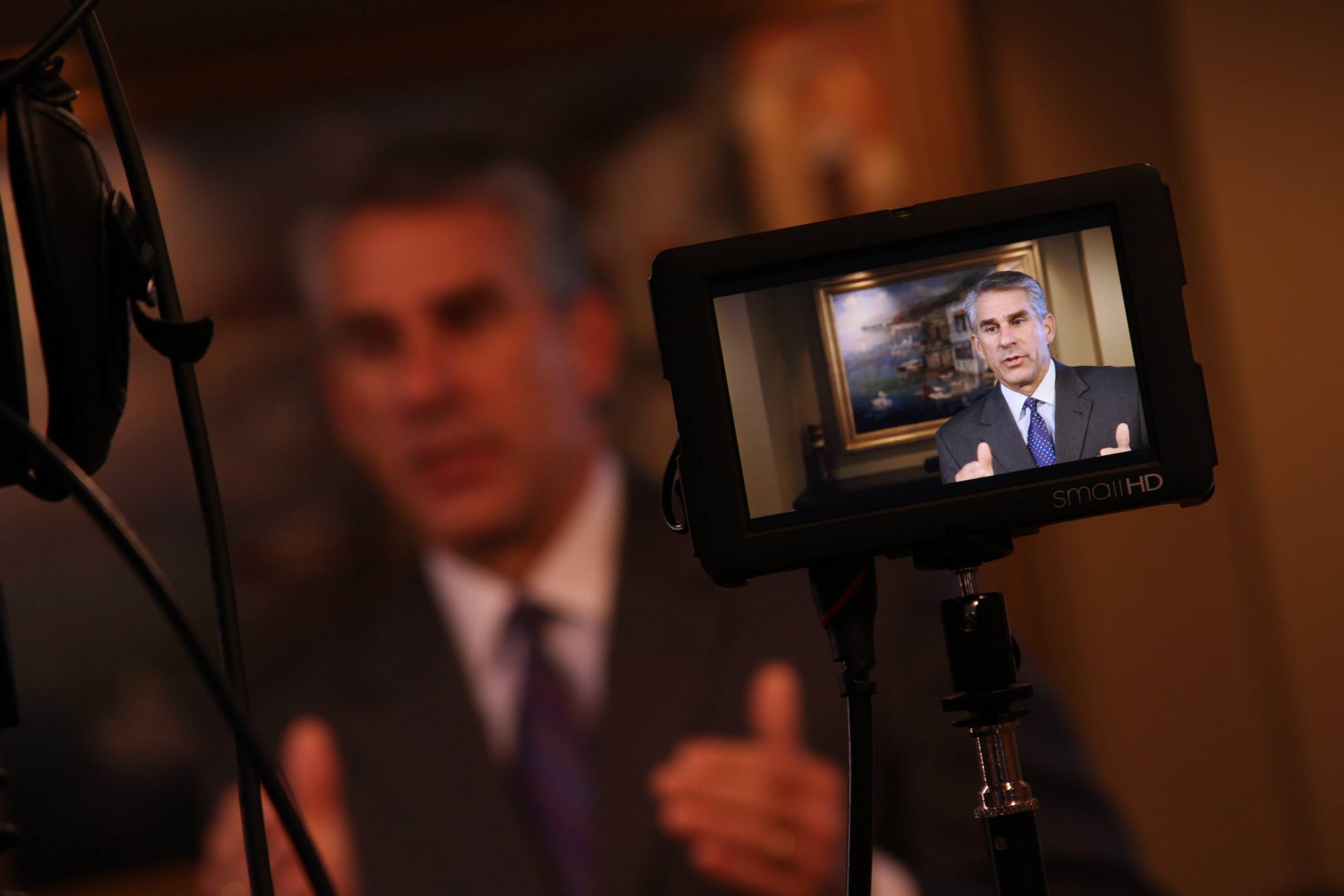“Where do I look? Do I look at you, or do I look at the camera, or what?”
After setting up for an interview, our interview subjects often ask us where to aim their line of sight. This is something that may seem trivial in the frenzy to properly stage the other critical elements (light, camera, makeup, background, etc.), but believe it or not, the subject eyeline is often the difference between a successful interview and a poor one.
TWO ACCEPTABLE OPTIONS
After more than a decade of shooting interview footage, we’ve come to accept that there are only two acceptable options for interview eyelines, contingent on shot composition.

We believe that a subject centered in the frame should be speaking directly to the camera, as if the audience were on the other side of a pane of glass. This is because when a subject is centered, but the subject’s eyeline is angled away from the camera, it gives the appearance of a disinterested interview subject; someone who may very well know what they are talking about, but appears not to care about passing the knowledge on to the audience. There’s a psychological component at play, here. In stage plays, actors are taught to “cheat out”, or turn their bodies unnaturally towards the audience, so that the audience feels involved in what is happening on stage. If they address only their stage partners, as they might in reality, they would close themselves off to outside engagement. The principles of on-camera interviews are much the same. If you’re center stage with all eyes on you, you should be talking to your audience; not past them.

In contrast, if the subject is oriented to the left of the right of the frame, it is awkward for them to look directly at the camera. This will be fairly obvious on set, and even more obvious upon footage review. Unlike the dramatic, theatrical ‘center stage’ subject, a left or right-aligned subject is settled comfortably into the foreground, often with an expanse of background elements between that subject and the other side of the frame. Given the proper eyeline, this expanse can be used as part of the story, and can help to better define the subject as well. The subject’s line of sight travels through the expanse, off-screen, to an avid listener just beyond the frame, a measurable testament to just how important this conversation is. But speaking directly to the camera makes that empty space unsettling; as though the audience were watching a horror movie, anxiously anticipating the void to be filled with an approaching ghost or zombie. Unless your goal is to put the audience on edge, we strongly recommend speaking to a subject just barely off-camera, opposite the subject.
THINK OF THE AUDIENCE
For every interview recorded, there is an intended audience; a group of people who will be interested in what the speaker is trying to convey. Your goal as the producer is to remove distractions that might prevent this audience from focusing on the message of the speaker. Determining where your speaker should be looking can help to smoothen the message of the speaker and put the audience further at ease, better enabling them to comprehend the speaker’s words. Study your audience well, and determine which is more appropriate: A) addressing them directly or B) letting them absorb your conversation with another.
GO FORTH AND CREATE ENGAGEMENT!
Interviews are captured and shared for a reason. The end goal of any video is to create user engagement with that video. User engagement can be defined in several different ways; for example, if your video is a sales video, you would want the user to engage with a purchase. If your video is a promotional video, you would want the user to engage by digging deeper into the organization, place, or person that you are promoting. The amazing thing about interview footage is that, when used properly, it can enhance almost any message and reach any audience.
If you have any questions about shot composition, or if you need help putting together a video of your own, we’d love to work with you! Give us a call at 410.853.7892, or email us at info@myrender.com. We look forward to hearing from you!




 604 E Joppa Road
604 E Joppa Road